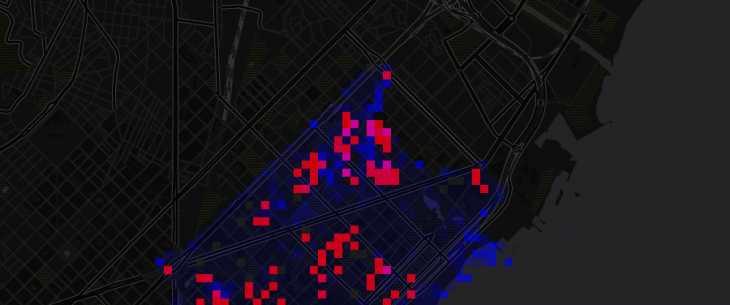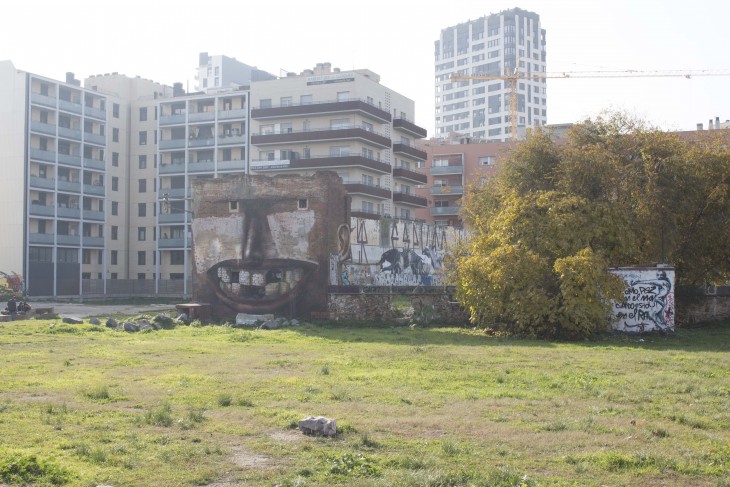The task of finding an anonymous place in the city drove us to a debate about what anonymity means. We decided that an anonymous place is somewhere with low-profile, where people don’t linger and the passerby doesn’t pay attention to. In other words, a place that doesn’t stay in the memory. After some discussion, we decided that to find the most anonymous place of Poblenou, we would need to find the area with lowest activities in the physical realm of the city but also in the digital media.
For that two datasets were used, one where functions (industrial, commercial, educational, housing, etc.) were equal to 0 and as for digital/social layer, we used the Twitter dataset in order to detect the places with lowest activity. The overlaying of this data was represented as a pixel grid where the brightest color (in this case, magenta) meant low activity in the physical and digital worlds.

In the moment of verifying the results of the analysis with reality, we were led to the neighborhood of Provençals. This area of Poblenou used to be an industrial hub that doesn’t exist anymore. Big structures such as brick towers and other buildings still survive in a very bad shape. However, urban artists have taken advantage of these and the area has become a urban art gallery, which leads us to question if anonymity is a bad characteristic of public space or if it can instead promote the generation of new urban dynamics.

Where is that? – Anonymous Poblenou is a project of IaaC, Institute for Advanced Architecture of Catalonia developed at Master in City and Technology in 2015 by:
Students: Mayra López, Serien Zein and Çaglar Gokbulut
Faculty: Mar Santamaría and Pablo Martínez